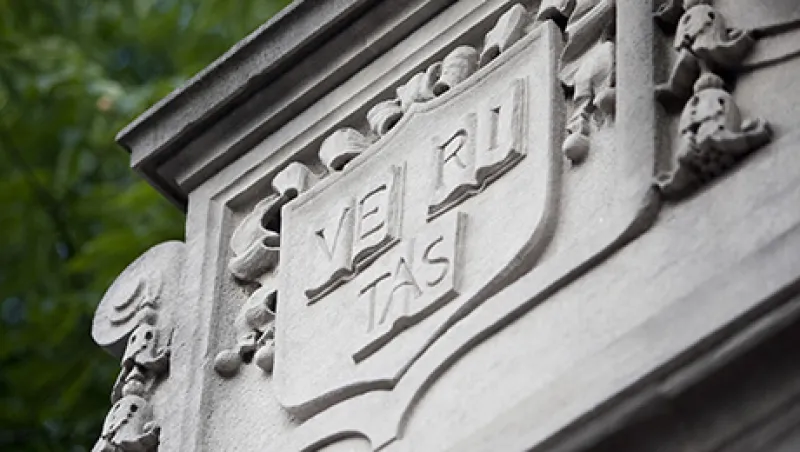
The Harvard University motto is etched on the top of a gate leading into Harvard Yard in Cambridge, Massachusetts, U.S., on Tuesday, June 21, 2011. Harvard University's governing board will add three members in July, the group's first expansion in more than three centuries. Photographer: Kelvin Ma/Bloomberg
Kelvin Ma/Bloomberg

